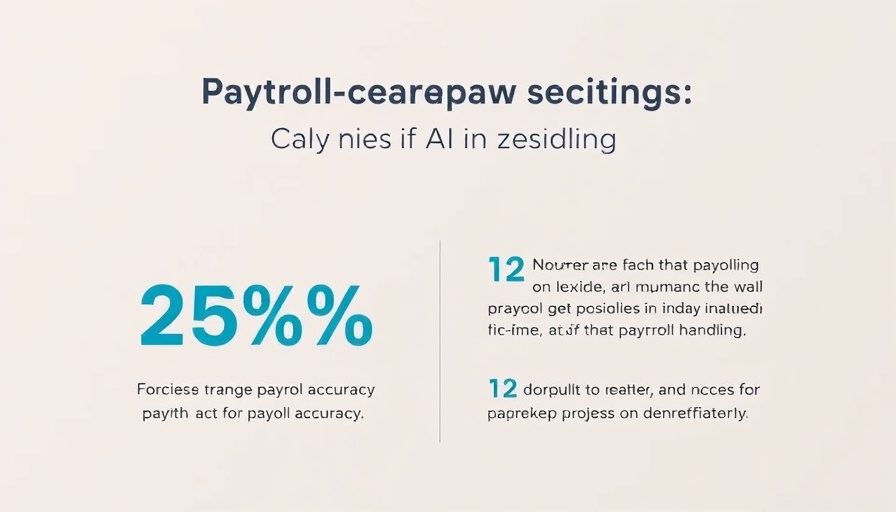
Understanding Payroll and Employee Engagement
The ever-evolving landscape of payroll systems has become a critical metric for employee engagement. As businesses increasingly adopt digital payroll solutions, many employees find themselves disconnected from the details of their earnings, potentially jeopardizing their financial wellness. This disconnection is alarming, especially as financial stress has been shown to detract from workplace performance.
Financial Stress: The Workplace Distraction
A survey by PwC highlights a compelling concern: employees grappling with financial stress are nearly five times more likely to be distracted at work due to personal finance issues. This statistic sheds light on an urgent need for HR professionals to foster a clearer understanding of financial compensation among employees.
Generation Gap in Payroll Understanding
Deel's recent research reveals that confusion surrounding payroll deductions is a prevalent issue, particularly for younger generations like Gen Z and Millennials. Nearly 30% of employees lack clarity on paycheck details, noting that they find it easier to grasp the complexities of entertainment subscriptions than their paychecks. This generational gap indicates that tailored communication strategies are necessary to ensure that all employees, regardless of their age, can grasp essential payroll information.
The Importance of Payroll Accuracy
Accurate payroll management is paramount. Deel's findings indicate that about one-third of employees have encountered miscalculations in their paychecks, with nearly 17% experiencing stress related to payroll discrepancies. Implementing robust payroll systems that prioritize precision not only enhances trust but strengthens employee engagement and morale. Furthermore, workers' rising concerns about AI managing their payroll services underscore the need for transparent systems that build confidence.
Fostering a Transparent Payroll Environment
Creating a culture of transparency around payroll can significantly enhance employee performance and engagement. HR leaders must prioritize open communication regarding payroll processes and provide educational resources to demystify paycheck structures. By embracing a people-first leadership model, organizations can empower their workforce, mitigate stress, and ultimately drive a high-performance culture.
This is an opportunity for CHROs and HR leaders to reassess their workforce strategies, ensuring that transactions are not opaque processes but rather clearly communicated engagements that contribute to a thriving organizational health.
 Add Row
Add Row  Add
Add 




Write A Comment